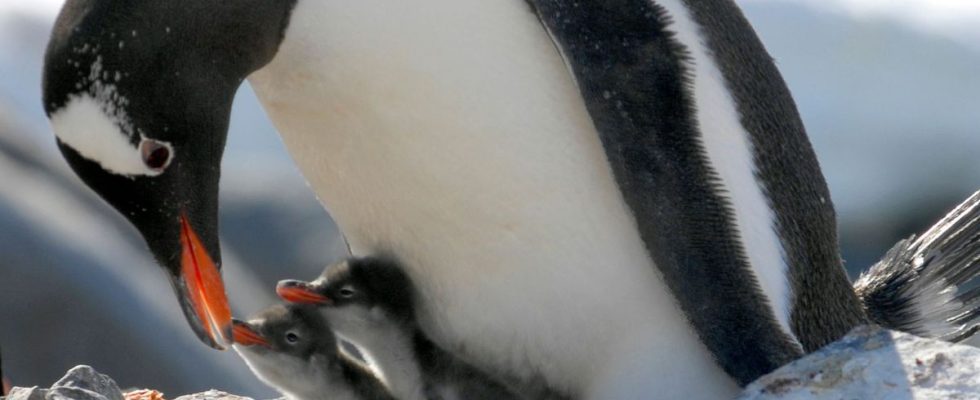Will emperor penguins be the first polar species to disappear due to global warming? A scientific study published on Thursday notes in any case a total and “sinister” mortality of chicks in several Antarctic colonies, following the record melting of the ice pack in recent months.
Of five colonies monitored in the Bellingshausen Sea region of West Antarctica, all but one suffered a ‘catastrophic’ 100% loss of chicks, which drowned or froze to death when the ice gave way under their tiny paws. They were not mature enough to face such conditions, report the researchers in Communications: Earth & Environment, a journal of the Springer Nature group.
A grim discovery
“This is the first major breeding failure of emperor penguins in multiple colonies at the same time due to melting sea ice, and is likely a sign of what to expect in the future,” he said. said lead author Peter Fretwell, a researcher at the British Antarctic Survey.
“We’ve been anticipating this for some time, but seeing it actually happen is grim,” he added. During last year’s Southern Hemisphere spring – from mid-September to mid-December – Antarctic sea ice, which forms by the freezing of salty ocean water, reached melting speeds record, before falling in February to its lowest level since the beginning of satellite measurements, forty-five years ago.
“Many more chicks will not have survived”
However, this early melting occurred in the middle of the emperor penguins’ already complex and fragile reproduction period. These seabirds reproduce in the middle of the austral winter, when the temperatures are the harshest, a process which is spread over many months, between mating, brooding and the time when the chicks are autonomous, thanks in particular to the training impermeable feathers, generally around January-February.
Emperor penguins, aka Aptenodytes forsteri, number around 250,000 breeding pairs, all in Antarctica, according to a 2020 study. Colonies in the Bellingshausen Sea account for less than 5% of that total. “But overall, around 30% of all colonies were affected by melting last year, so there will be a lot more chicks that didn’t survive,” says Peter Fretwell.
Emperor penguins could be extinct by 2100
Each year, starting in March, the adults embark on a journey of up to more than a hundred kilometers to reach their breeding sites on the pack ice, which are always the same. The females lay a single egg and leave it in the care of the male while they search for food, sometimes several hundred kilometers away. Male emperors keep newly laid eggs warm, protecting them from the elements by balancing them on their legs and covering them with a fold of skin forming a brood pouch, all without moving or eating, waiting for the eggs to return. foster mothers.
Emperor penguins are certainly capable of finding alternative sites, but melting records since 2016 threaten to exceed their adaptive capacities, scientists believe. The emperor penguin was recently listed as an endangered species by the US Wildlife Authority. The British Antarctic Survey estimates that at the current rate of global warming, almost all emperor penguins could be extinct by the end of the century.

